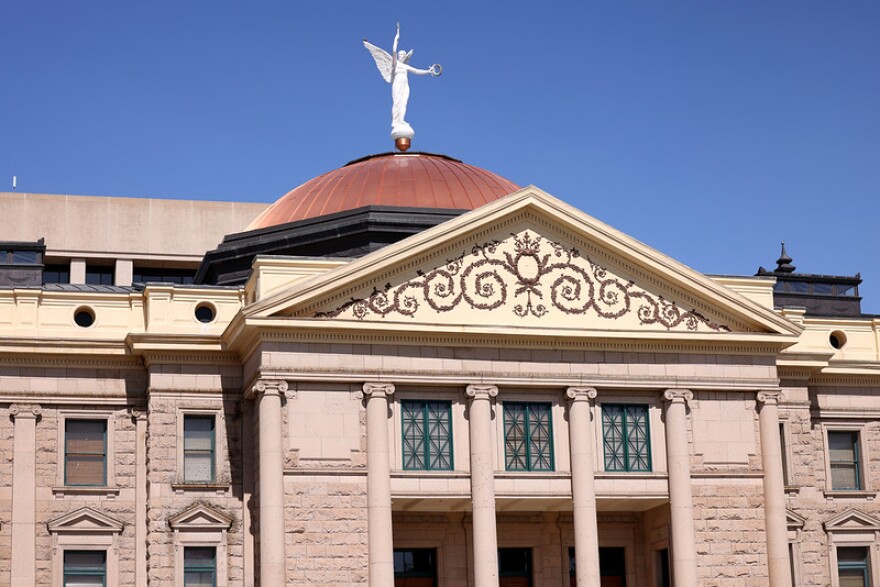As Arizona approached the end of its fiscal year on June 30th, residents faced a tense budget showdown at the State Capitol that threatened to disrupt essential services across the state. For weeks, the debate centered on whether lawmakers would pass a full state budget for the coming year or default to a temporary continuation plan that maintained last year’s funding levels. With the clock ticking, the standoff raised the specter of Arizona’s first-ever government shutdown—an outcome that could have impacted thousands of families, workers, and businesses.
Initially, the Arizona Senate, working with Governor Katie Hobbs, approved a $17.6 billion bipartisan budget that increased funding for Medicaid, K–12 education, and key public services. But the House of Representatives rejected that plan and instead passed a continuation budget with no new investments. House Republican leaders claimed their version gave lawmakers more time to debate long-term priorities without risking a shutdown. Governor Hobbs, however, promised to veto the continuation plan, calling it inadequate and out of touch with Arizona’s current needs.

As the July 1st deadline loomed, Hobbs followed through on her threat, vetoing both the continuation budget and the full-year plan passed solely by the House. With no legal authority to spend money without an approved budget, Arizona teetered on the brink of a shutdown. More than 34,000 state employees were preparing for furloughs. Services such as vehicle registration, licensing, and even some public safety operations were at risk of being suspended. School districts and universities faced funding delays that could have disrupted summer programs and planning for the fall semester.
Of particular concern was the Arizona Department of Public Safety’s ability to maintain critical emergency operations. A shutdown could have forced DPS to scale back helicopter rescues and aerial support in remote areas—services essential for responding to lost hikers, stranded motorists, and wilderness emergencies. Rural sheriffs and volunteer rescue teams depend heavily on DPS for coordination and equipment, and losing that support could have put lives at risk.
In a dramatic turnaround, the Arizona House reversed course on June 26 and 27, ultimately approving the original Senate-negotiated bipartisan plan. Governor Hobbs signed the $17.6 billion budget into law just in time to avoid a government shutdown. The final agreement preserved increased investments in healthcare, education, childcare assistance, public safety, and infrastructure—areas that had been left out of the continuation proposal. It marked a rare bipartisan victory in an otherwise sharply divided legislature.
 For most citizens, the budget battle may have seemed like political theater, but its resolution brought meaningful relief. Essential services will continue uninterrupted, and long-overdue investments in schools, hospitals, and public safety are now secured. Still, the near-shutdown highlighted the fragile state of Arizona’s legislative process—and the importance of civic engagement in keeping government responsive and effective.
For most citizens, the budget battle may have seemed like political theater, but its resolution brought meaningful relief. Essential services will continue uninterrupted, and long-overdue investments in schools, hospitals, and public safety are now secured. Still, the near-shutdown highlighted the fragile state of Arizona’s legislative process—and the importance of civic engagement in keeping government responsive and effective.
While a crisis was averted, the episode underscored how political gridlock can quickly translate into real-world consequences. Arizona residents are encouraged to stay engaged, contact their representatives, and keep an eye on how future budget discussions unfold. In a state grappling with rapid growth, environmental pressures, and rising costs, stable governance is more critical than ever.
Works Cited
Arizona Mirror. “Arizona Faces Historic Shutdown as House Passes Doomed Continuation Budget.” azmirror.com
AZ Family. “Arizona Leaders Brace for Possible Government Shutdown.” azfamily.com
KJZZ. “Arizona Edges Closer to Government Shutdown after House Passes Budget Hobbs Vowed to Veto.” kjzz.org
KJZZ. “Gov. Hobbs Says She Will Veto Any Continuation Budget as Deadline for New Spending Plan Nears.” kjzz.org
Associated Press. “Arizona Governor Caps Off Quarrelsome Legislative Session with Budget Approval.” apnews.com
Axios Phoenix. “Budget Fight Pushes Arizona Closer to Shutdown.” axios.com



